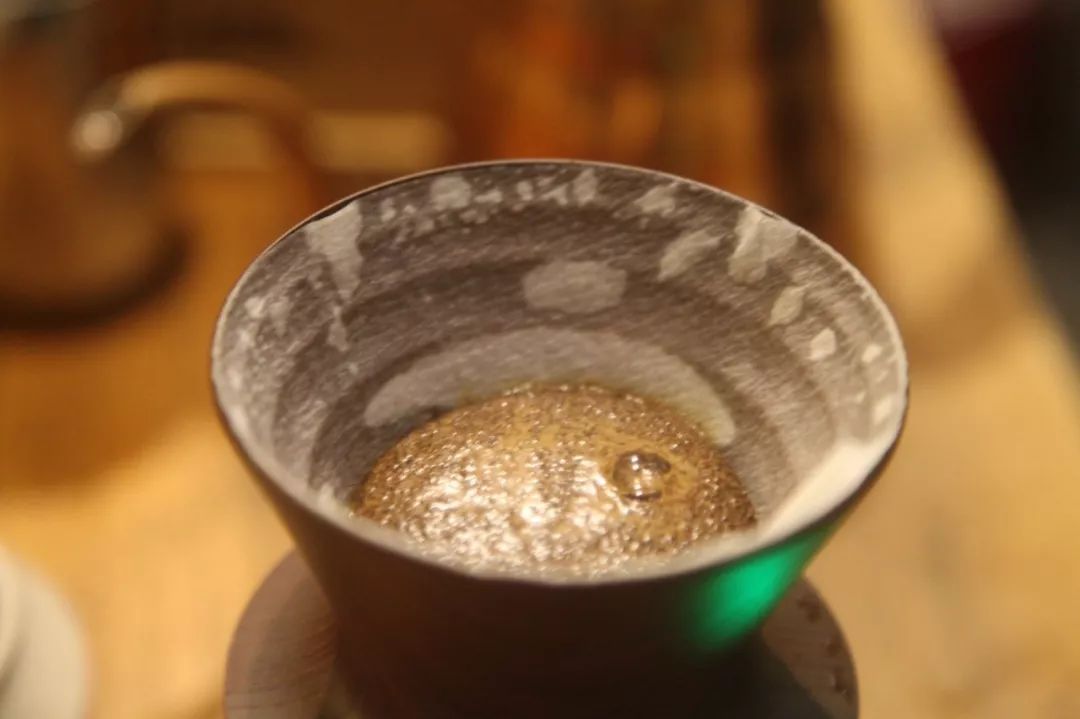How do you plant coffee trees? Its growth process, what are the growth conditions?

Professional coffee knowledge exchange more coffee bean information please follow the coffee workshop (Wechat official account cafe_style)
How do you plant coffee trees? Its growth process, what are the growth conditions?
1. Raising seedlings
Nursery preparation:
The selection of nursery should pay attention to the shading effect. Seedlings exposed to direct sunlight are easy to die and reduce the survival rate. Therefore, the nursery must have shading equipment, shading materials can use shading nets, thatch or straw, or you can choose to form a nursery under rows of big trees to cultivate coffee seedlings. Secondly, drainage facilities should be done well. Poor drainage can easily cause seedlings to rot.
There are basically two ways of raising coffee trees: sowing on demand and cuttings.
After the coffee fruit is harvested, it is peeled and fresh seeds with gelatinous shape are selected for sowing. Spread the seeds directly on the seedbed filled with sandy loam and cover with a thin layer of soil about 1 cm thick, not too deep, otherwise the seeds will not germinate easily. After finishing sowing, water should be sprinkled regularly to maintain soil moisture. In the second way, the seeds are sown directly in a 3-inch seedling pot filled with sandy loam, one in each pot. Then cover with a thin layer of soil about 1 cm thick. After finishing the sowing work, sprinkle the water regularly and keep it wet.
Normally, it takes 45-60 days for seeds to germinate after sowing. When sprouting, first stick out the growing root and straighten the coffee bean up to make it look like a soldier in a helmet. It is called Soldier at this time. About two weeks later, a pair of cotyledons, shaped like butterflies, will emerge. This time it is called Buterfly. About a month later, the first pair of true leaves will grow. After the seeds sown on the seedbed grow 2-4 pairs of true leaves, they can be transplanted into a 4-inch nursery pot.
After five to six months, the seedlings grow 4-8 pairs of leaves, which can be grafted. The grafted plants can adapt to the environment and enhance disease resistance. However, it is not usually adopted.
Another method of propagation is cutting, but this method has not been used in Taiwan. Choose the annual side branches of the mature coffee tree, not too close to the trunk branches, not too thick. Cut every 10 cm into segments, each with a pair of leaves. Each section is cut in half longitudinally, and each section has a leaf. Cut off some of the leaves left on each branch. Insert the branches with leaves upward into the seedbed or in a pre-prepared seedling basin to make the leaves protrude from the soil. After fully watering and continuing to take care of it for a few weeks, roots and leaves will be produced.
When the seedlings grow 8-10 pairs of cotyledons, opposite lateral branches begin to grow, and then a pair of lateral branches grow at each pair of cotyledons. More than a year after sowing, the seedlings grow to 2-3 feet tall, with about 3-4 pairs of lateral branches. Suitable for planting in prepared farmland.
The newly emerging seed is called Bing Brother. (Li Songyuan, 2004)
Seedlings that have grown two to three pairs of true leaves. (Li Songyuan, 2004)
Seedlings ready to grow lateral branches. (Li Songyuan, 2004)
Matters needing attention and working procedures in nursery operation are as follows:
(l) purchase healthy seeds or seedlings from creditworthy seedling dealers.
(2) the seeds should be selected from the mother tree free of diseases and insect pests, and the mother tree should show excellent variety characteristics, such as high yield, exuberant and robust plants.
(3) the seeds should not be damaged.
(4) nursery management: keep the nursery basin or nursery bed wet and not too dry, lest the seedlings die. During the drought, you need to water twice a day, once in the morning and once in the afternoon. During the rainy season, water is watered as appropriate. At the same time, weeds on the seedling basin or seedling bed should be pulled out regularly, and fertilization should be applied slightly after germination.
two。 Colonization
Coffee seedlings grow to a height of more than 60 cm, that is, they are suitable for planting. If you choose coffee seedlings 3-4 feet (120-160 cm) high, they are less likely to be excluded by weeds after planting, and the success rate is higher. The best time to plant is between February and March in spring and between October and December in winter. During these periods, the survival rate is relatively high.
1)。 Choose a suitable planting site
Coffee cultivation, must choose a well-drained site and soil quality, the soil is better with sandy loam. The poor drainage of clayey soil limits the growth of roots, which reflects the growth of coffee trees. It is best to avoid planting in clayey soil areas.
2)。 Land preparation
Land preparation should be done before planting. In order to grow coffee on flat land, we should first arrange the irrigation and drainage system.
a. Remove weeds from the ground.
b. Decide whether to make a bed, make it high and wide, and avoid flooding.
c. If no bed is made, consider using a sprinkler or drip irrigation system.
d. The plant spacing of coffee is 2m and the row spacing is 2-3m. There are an average of 200 plants per minute.
3)。 Colonization
Before planting, decide the plant spacing and row spacing, and then dig the planting hole, 30 centimeters wide and 30 centimeters deep, put one to two kilograms of organic fertilizer at the bottom as base fertilizer, and then cover it with a thin layer of soil.
Row spacing and plant spacing: row spacing 2-3 m, plant spacing 1.5-3 m.
When planting, the coffee seedlings are taken out from the seedling pot and put into the planting hole. The best planting method is to put the seedlings into the planting hole at an angle of 30 degrees, and the seedlings will produce several new buds from near the soil surface. However, this approach slows down the growth of coffee trees, with the advantage that the new plants are stronger and less likely to lodge. After the seedlings have been placed, they are compacted with soil.
The key to the success or failure of the coffee garden depends on the five years before it begins to operate. At this stage, coffee trees must be taken care of healthily, pay attention to the prevention and control of diseases, insect pests and various natural enemies, and pruning techniques should be used to keep the trees in a state of high productivity. Weeds in the garden must be removed and properly harvested. These years are the "year of decision" in the life of coffee trees. According to years of experience, if coffee cultivation in Taiwan has not grown for more than five years, it can hardly be said to have been successful every month, because the roots of coffee trees within five years are not deep enough, and they are vulnerable to flooding or failure due to typhoons. Coffee plantations for more than five years have deep root plates and strong plants.
Coffee seedlings planted in the fields. (Li Songyuan, 2003)
3. Shade
In the low-altitude areas of southern Taiwan, when growing coffee, consider planting shade trees, or between betel nut trees or coconut trees. With shade trees, coffee trees are easier to take care of and grow healthier. If there is no shade, coffee trees are easily scalded by the hot summer sun in the south, causing the coffee trees to grow.
Shade trees can choose bananas, leafy olive kernels, weeping banyan and other trees. Weeping banyan can not only be used as a shade tree, but also has a good windbreak effect. However, its root system is thick and broad, and it will compete for territory with coffee trees. The canopy can also be overexuberant. Keep away from the coffee tree when planting.
In the early stage of planting, bananas can be planted with coffee seedlings at the same time, because banana trees grow very fast and can achieve shading effect in a short period of time. As banana trees grow rapidly and form excessive shade, attention should be paid to the row spacing between banana trees and coffee trees, as well as the renewal of banana trees.
4. Fertilizer application
Fertilization plays an important role in the growth of young coffee garden, which can make the plant grow smoothly and healthily. Proper fertilization can promote the flowering of adult coffee trees and avoid the death caused by excessive fruiting. At the same time, it can maintain a fixed amount of fruit each year.
Fertilization in the first year
The main purpose of fertilizing young trees is to promote the growth of roots and plants and to keep them healthy. For this reason, fertilizers with high phosphoric acid content are needed. If applied in the right place, the growth of young coffee trees will be obvious, and the roots and branches will grow luxuriantly.
At the time of planting, an appropriate amount of N-P-K 2-24.5-2 fertilizer was probably applied at the bottom of the planting hole as base fertilizer, and the first fertilization began about two months after planting. It is recommended to apply 10-10-10 compound fertilizer. Grab a handful of fertilizer by hand and sprinkle it on the dripping line about a foot from the tip of the outer branch of the trunk (each tree needs only one handful of fertilizer, spread and avoid centralized stacking. ) it is best to dig a shallow ditch around the tree along the rain line and bury the fertilizer in the ditch.
Then apply the same amount of fertilizer in the same way every two months. This is the first year of fertilization.
Fertilizer
Quantity
Timing of fertilization
The first year
N: P: K
10-10-10
Sprinkle a hand on each tree.
Fertilize for the first time in the next two months, and then once every two months.
Fertilization in the second year
When the coffee tree grows up in the second year, the lateral branches have obviously spread out and the trunk has grown taller. The roots also extend outward, so the amount of fertilizer application must be increased. It is applied every two months, and each tree is sprinkled with two handfuls of fertilizer. Use the same fertilizer and spread it on the ground under the side branches.
Year
Fertilizer
Quantity
Timing of fertilization
The second year
N:P:K10-10-10
Spread two hands on each tree.
Fertilize once every two months.
Fertilization in the third year
Coffee trees have grown to 4-6 feet (120-180 centimeters) tall in the third year. Potash fertilizer is needed to promote flowering and fruiting, and fertilizers high in nitrogen and potassium are applied. It is recommended to use 14-7-28 compound fertilizer from the third year.
Spread fertilizer by hand five times a year. The time of the first fertilization is at the end of harvest and after pruning. The second fertilization time is applied immediately after the flowering season, and the third fertilization time is during the fruit growth period and when the plant is growing luxuriantly. The time of the fourth fertilization is before harvest.
Times
Fertilizer
Quantity
Timing of fertilization
The third year
N:P:K 14-7-28
Each tree weighs 0.3 kg.
Fertilize once every two months.
Fertilization in the fourth year
Coffee trees have grown up and must increase the amount of fertilizer applied five to six times a year. Fertilizer with high potassium content of 14-7-28 is recommended. Note: when the amount of fertilizer is increased, special care must be taken not to spread the fertilizer near the tree trunk, preferably under the dripping line five feet away from the trunk.
If the coffee garden is located in an area with sufficient sunshine, additional ammonium sulfate (57 kg per sub-plot) is required and fertilized twice. Half amount of ammonium sulfate was added between the first and second periodic application of 14-7-28 compound fertilizer, and the other half was added once between the third and fourth regular fertilization.
Note: if it is overcast and rainy, there is no need to replenish nitrogen fertilizer.
Year
Fertilizer
Quantity
Timing of fertilization
The fourth year
N:P:K 14-7-28
Additional ammonium sulfate in areas with sufficient sunshine
0.7 kg per coffee tree and 0.4 kg ammonium sulfate per coffee tree.
Fertilize once every two months.
Ammonium sulfate fertilizing time is in March and July.
Fertilization in the fifth year
Fertilizer 14-7-28 with high potassium content is applied, and additional application of ammonium sulfate is needed in areas with sufficient sunshine. In areas where sunshine is relatively moderate, the amount of ammonium sulfate applied is halved.
Year
Fertilizer
Quantity
Timing of fertilization
The fifth year
N:P:K
14-7-28
Ammonium sulfate should be added in areas with sufficient sunshine.
1.5kg of each coffee tree, in the area with sufficient sunshine, the amount of ammonium sulfate depends on the intensity of sunlight. About 0.5 to 1 kg per coffee tree
Fertilize once every two months.
Ammonium sulfate fertilizes in March, May and August.
5. Weed
Weeding is a very important job. If you are negligent, it will be useless to apply any amount of fertilizer. According to the climate, timely and appropriate amount of fertilization, coupled with careful weeding, the coffee tree will grow very strong.
6. Overlay
Experienced coffee farmers will cover the coffee trunk with coffee husks, rice husks, stones, hay and so on. Prevent weeds from hindering root development. Mulching can maintain soil moisture during dry periods, especially when the rainfall is low and the wages for weeding or pulling weeds are expensive. This method is the cheapest and most effective method of weeding in the first year.
The coffee garden covers the operation, which has the following advantages:
1)。 Lower soil temperature: if the soil temperature is higher than 35 ℃, the roots will be damaged and the organic matter in the soil will be lost. Mulching can prevent sunlight from reaching the soil directly and lower the soil temperature.
2)。 Protect the soil from Rain Water erosion.
3)。 The function of storing water.
4)。 Provide nitrate (potassium) ingredients.
5)。 Increase the nutrients in the soil.
6)。 Supply organic matter.
7)。 It is beneficial to root growth.
8)。 Mulching can inhibit weeds.
9)。 Enlarge the fruit.
10)。 Reduce soil acidification.
11)。 Increase yield per unit area: mulching alone will not increase the total number of fruit nodes per tree, but can increase fruit by 33% and harvest by 12%.
Important Notice :
前街咖啡 FrontStreet Coffee has moved to new addredd:
FrontStreet Coffee Address: 315,Donghua East Road,GuangZhou
Tel:020 38364473
- Prev

Brewing experiment of hand-made Coffee | comparison between V60 and YASUKIYO wooden filter cup
Professional coffee knowledge exchange more coffee bean information please pay attention to the coffee workshop (Wechat official account cafe_style) preface of each filter cup, due to the shape, filter holes and grooves of the match, will have a different impact on the taste of the extraction, each filter cup has its own design advantages, basically to control the speed of flow decline, ribs and exhaust trade-off. With different filter cups, you can make the same
- Next

You must learn the basic knowledge of a good cup of coffee.
Professional coffee knowledge exchange more coffee bean information please follow the coffee workshop (Wechat official account cafe_style) about a good cup of coffee, coffee introduction knowledge, you must learn! What's the key to a good cup of coffee? Good brewing skills and utensils are indispensable, but high-quality coffee beans are the most important element. Have no idea about coffee beans, or are often named by a bunch of coffee.
Related
- Beginners will see the "Coffee pull flower" guide!
- What is the difference between ice blog purified milk and ordinary milk coffee?
- Why is the Philippines the largest producer of crops in Liberia?
- For coffee extraction, should the fine powder be retained?
- How does extracted espresso fill pressed powder? How much strength does it take to press the powder?
- How to make jasmine cold extract coffee? Is the jasmine + latte good?
- Will this little toy really make the coffee taste better? How does Lily Drip affect coffee extraction?
- Will the action of slapping the filter cup also affect coffee extraction?
- What's the difference between powder-to-water ratio and powder-to-liquid ratio?
- What is the Ethiopian local species? What does it have to do with Heirloom native species?

